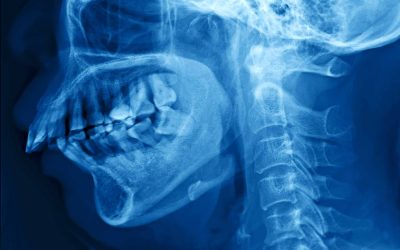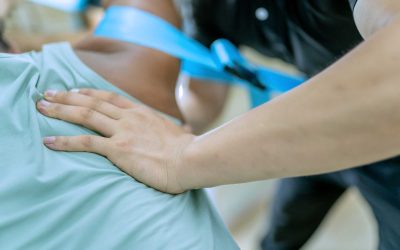Back pain affects nearly 84% of people worldwide at some point in their lives. Here in the Blue Ridge Mountains, our active community is no exception, with many patients coming to our Asheville clinic seeking relief. While back pain can be debilitating, understanding the science behind it can be empowering. Our team of specialists at 1on1 PT Asheville is committed to sharing evidence-based information to help you manage and overcome back pain.
Read on to learn more about common myths about back pain. Or TLDR and just give us a call – we can help! No referral needed, come straight to see us right away: 828-785-8388
10 Common Myths About Back Pain – Debunked
Myth 1: Back Pain Is a Sign of Serious Damage
While back pain can be extremely uncomfortable, it’s rarely dangerous. The majority of back pain episodes resolve without the need for invasive treatments. Pain doesn’t always mean damage – rather, it’s your body’s alarm system that can be influenced by many factors beyond physical injury. This is particularly important to understand for those suffering from chronic pain, where pain persists despite tissue healing.
Myth 2: Scans Will Identify the Cause of Back Pain
Many patients assume that getting an X-ray or MRI will provide answers. However, research shows that scans are only necessary when serious conditions like fractures, cancer, or infections are suspected – which account for less than 1% of all back pain cases.
Interestingly, studies show that even people without back pain commonly have findings on scans:
- 30% of 20-year-olds have disc bulges (increasing to 84% of 80-year-olds)
- 37% of 20-year-olds have disc degeneration (increasing to 96% of 80-year-olds)
- 29% of 20-year-olds have disc protrusions
- 4% of 20-year-olds have facet joint degeneration (increasing to 83% of 80-year-olds)
These findings suggest that many “abnormalities” seen on scans are actually normal variations that increase with age and are often not the source of pain. This is particularly relevant for patients with sciatica symptoms, where radiating leg pain may occur with or without obvious disc issues on imaging.
Myth 3: Your Back Is Fragile and Needs Protection
The spine is remarkably resilient and designed for movement. Contrary to popular belief, your back doesn’t easily get “out of alignment” or have joints that “slip out of place.” These outdated concepts can actually increase fear and lead to protective guarding that worsens pain.
When patients experience relief after spinal manipulation treatments, it’s typically due to changes in the nervous system and muscle relaxation – not from realigning structures. At 1on1 PT Asheville, we use manipulation techniques as one tool among many to provide relief while empowering patients with knowledge about their resilient bodies.
Myth 4: A Strong Core Is All You Need
While core strength is important, there’s no evidence that specialized core stability programs are more effective than general exercise for back pain. In fact, many people with back pain actually over-engage their core muscles, creating unnecessary tension much like clenching a fist with a sore wrist.
This understanding is particularly valuable for our patients with structural spinal conditions. Our rehabilitation approaches for scoliosis, Scheuermann’s disease, and other spinal disorders focus on whole-body movement patterns rather than isolated core exercises alone.
Myth 5: Poor Posture Causes Back Pain
Despite what you may have heard, science hasn’t identified an “ideal posture” that prevents back pain. Many people without back pain sit in relaxed, varied positions, while those suffering often maintain rigid, uncomfortable postures. What matters most is movement variety rather than maintaining any single “perfect” position.
Myth 6: The Back Isn’t Designed for Bending and Lifting
Many people believe that bending and lifting are dangerous and should be avoided to protect the back. In reality, your spine is specifically designed for these movements. Just like other body parts, the back adapts to various activities when conditioned properly.
The key is building capacity gradually. Different people may use different lifting techniques based on comfort and efficiency—similar to how runners develop their own style. If you’re unsure about proper lifting techniques, our physical therapists can provide guidance tailored to your specific needs and activities.
Myth 7: Pain Always Means Tissue Damage or Injury
The traditional view that pain directly corresponds to tissue damage is outdated. Many factors can influence how we experience back pain, including:
- Physical factors (guarding movements, avoidance behaviors)
- Psychological factors (fear of pain or not recovering, stress, depression)
- Health factors (fatigue, low energy, poor overall wellness)
- Lifestyle factors (sleep problems, low physical activity, weight)
- Social factors (work or home relationship issues, stressful life events)
This means you might feel more pain when moving even though you’re not causing any damage. For patients dealing with chronic pain, understanding this complex relationship is crucial for recovery.
Myth 8: Bed Rest Is Needed for Back Pain Recovery
While it might seem logical to rest completely when experiencing back pain, evidence strongly suggests that staying active and gradually returning to normal activities helps recovery. Initial rest might provide relief, but prolonged bed rest is associated with:
- Higher pain levels
- Greater disability
- Longer absence from work
Most back pain patients benefit from gentle, progressive movement rather than complete inactivity.
Myth 9: Strong Medications Are Needed for Back Pain Relief
Many assume that intense pain requires powerful painkillers. Research shows that over-the-counter options are often just as effective as stronger prescription medications, particularly opioids, which come with significant risks including dependence, falls, depression, and sexual dysfunction.
If you’re experiencing back pain, start with simpler options and consult with your healthcare provider about a plan to review and potentially stop pain medications as you improve.
Myth 10: There Are Miracle Cures and Quick Fixes for Back Pain
Be skeptical of products claiming to be miracle cures. The market is flooded with devices, supplements, fancy exercise machines, special shoes, tapes, and other products claiming to eliminate back pain instantly. Most of these products haven’t been scientifically tested, and those that have generally show unimpressive results.
Evidence-based approaches like appropriate movement, gradual return to activities, and addressing various contributing factors remain the most reliable way to manage back pain effectively.
When to Seek Professional Help
While most back pain resolves with time and appropriate self-management, our experienced team at 1on1 PT Asheville is here to help when:
- Pain persists beyond a few weeks
- Pain is severe or worsening
- You experience accompanying leg symptoms (numbness, weakness, or tingling) that might indicate sciatica
- You have a diagnosed spinal condition like scoliosis or Scheuermann’s disease that requires specialized management
- You’re unsure how to safely return to activities you enjoy
- Pain is significantly affecting your quality of life or you’re developing chronic pain patterns
Our evidence-based approach focuses on understanding your unique pain experience and developing personalized strategies to help you move with confidence again.
The Path Forward
Remember that back pain, while common and often frustrating, is rarely dangerous and can improve with the right approach. Our team at 1on1 PT Asheville is committed to helping Asheville residents overcome back pain through education, personalized exercise programs, and hands-on care when needed.
Whether you’re dealing with temporary pain from overexertion, chronic pain that hasn’t responded to other treatments, or a complex condition like scoliosis, we provide one-on-one care tailored to your specific needs.
Don’t let back pain keep you from enjoying the beautiful mountains and vibrant culture of Western North Carolina. Contact us today to learn how we can help you get back to doing what you love, pain-free.
1on1 PT Asheville is Asheville’s premier evidence-based physical therapy practice, specializing in a variety of services including the treatment of back pain, sciatica, spinal disorders, and chronic pain. Our team of experienced therapists combines the latest research with compassionate care and one on one physical therapy to help you achieve optimal health and wellness.



